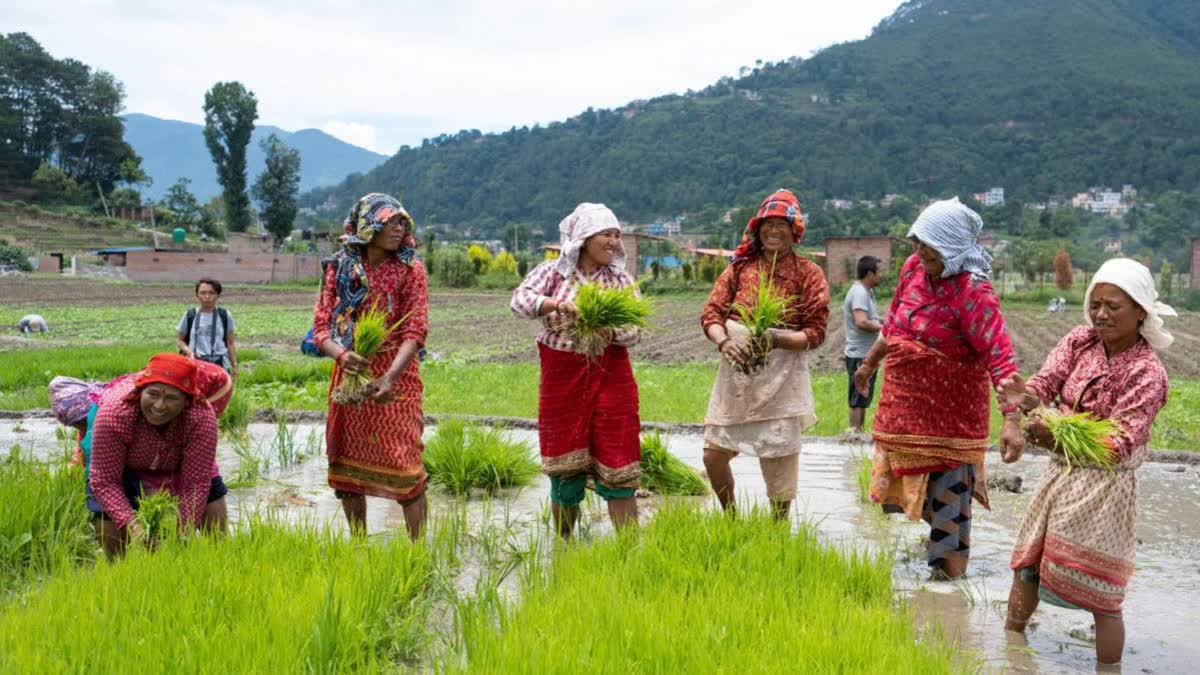New Delhi : Union Finance Minister Nirmala Sitharaman on Monday released the Economic Survey 2023-24 in the Lok Sabha in which the aspects focus on government interventions in the crop, livestock, animal husbandry and fisheries to enhance investment and productivity, provide reasonable returns to farmers through the Minimum Support Price (MSP), improve access to high-quality inputs and enable better extension services.
As per the survey report, in the last five years, the agriculture sector has grown at an average growth rate of 4.18 per cent per year. The country also has a comfortable stock of food grains, around 40 per cent of which is distributed to two-thirds of the population free of cost. India exports more than 7 per cent of its food grains. The growth in the agriculture and allied sectors has contributed positively to the growth of the Indian economy.
The government’s push towards crop diversification is facilitated through a higher increase in MSP over the average cost of production for oilseeds and pulses with lentils (masur), getting the highest among pulses at 89 per cent over the cost of production, followed by tur at 58 per cent in 2023-24 while MSP for coarse cereal/millets such as bajra was 82 per cent over the cost of production.
“The increase in MSP for safflower and soybean (yellow) was 52 per cent over the cost of production in 2023-24. This needs to be persisted with to address the imbalance between the production of rice and wheat and the production of pulses and oilseeds,” Economic Survey stated.
The Indian agriculture sector provides livelihood support to about 42.3 per cent of the population and has a share of 18.2 per cent in the country’s GDP3 at current prices. The sector has been buoyant, which is evident from the fact that it has registered an average annual growth rate of 4.184 per cent at constant prices over the last five years. “Several initiatives and measures taken by the government in the form of assured remunerative prices through MSP improving access to institutional credit, enabling crop diversification, promoting digitisation, and mechanisation, encouraging adoption of sustainable practices through organic and natural farming, and focusing on productivity enhancement have had a positive impact on the sector,” mentioned in Economic Survey.
As per provisional estimates for 2023-24, the growth rate of the agriculture sector stood at 1.4 per cent, which is below 4.7 per cent in 2022-23, mainly because of a drop in the food grain production due to delayed and poor monsoons caused by El Nino. The allied activities - livestock and fisheries have performed better than the traditional crops such as cereals, which is evident from an increase in their share in agriculture Gross Value Added (GVA) at current prices from 24.38 per cent and 4.44 per cent in 2014-15 to 30.23 per cent and 7.25 per cent in 2022-23 respectively. The share of the crops sector in Agriculture GVA at current prices in 2022-23 was 55.28 per cent as compared to 61.75 per cent in 2014-15, it stated.
In 2022-23, food grain production hit an all-time high of 329.7 million tonnes, and oilseeds production reached 41.4 million tonnes. In 2023-24, food grain production is slightly lower at 328.8 million tonnes 12, primarily because of poor and delayed monsoons. Production of other crops such as Shree Anna/nutri cereals and total oilseeds marked a slight increase. The nutri-cereals increased marginally by 1 percent from the previous year, as did Tur, with a production estimated at 33.85 lakh tonnes (LT) as compared to last year’s production of 33.12 LT. With the harvesting still in progress, there may be further changes in successive estimates, the Survey states.



